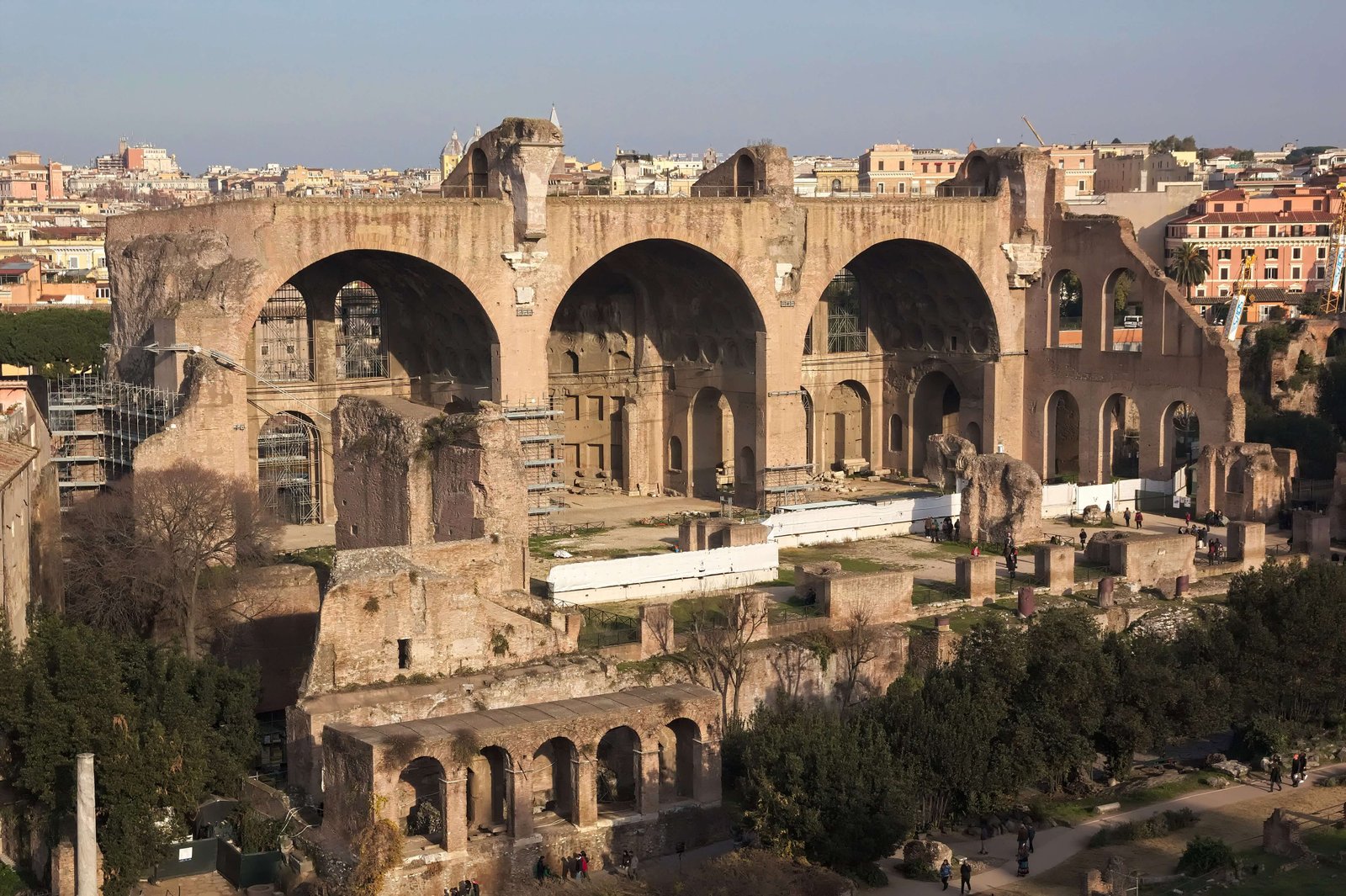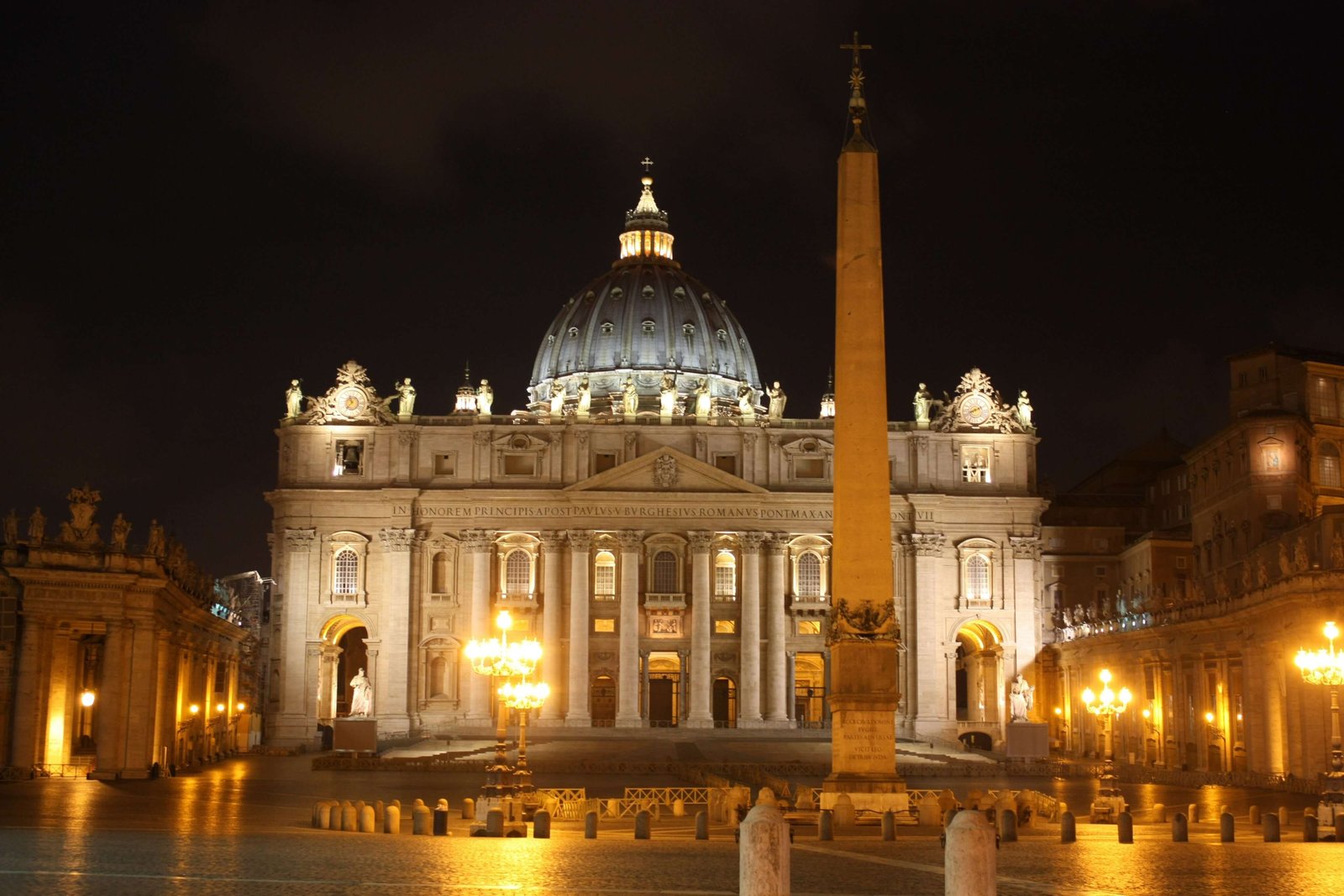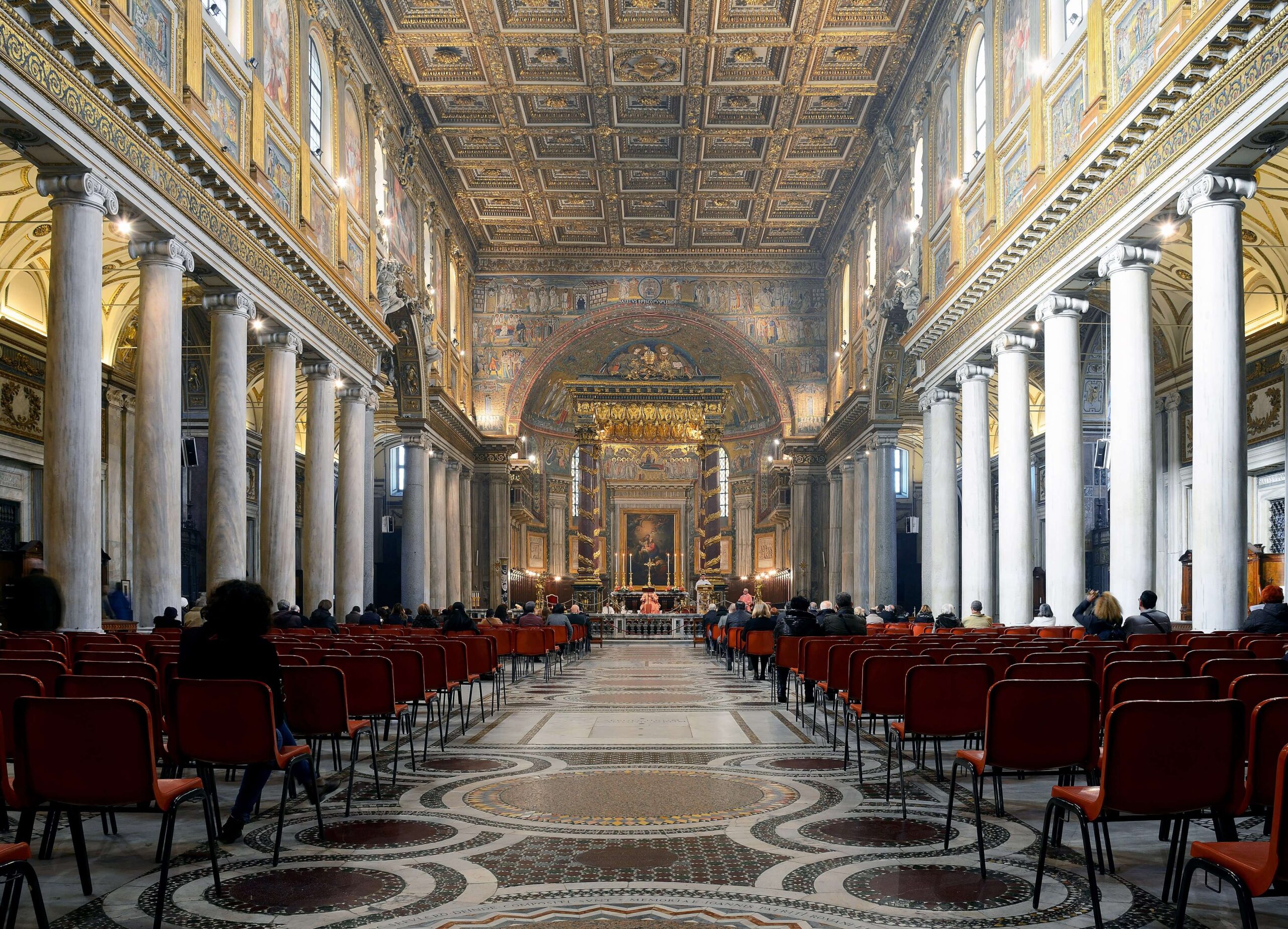
If you’ve read about any type of European architecture, you’ve probably heard the term basilica. In the modern world, the term is often used as another word for church, such as the Basilica of Saint Denis in France. However, they aren’t actually synonyms. So, what’s a basilica?
Basilica origins
The basilica dates back to classical times. Back in ancient Rome, it was a large, multi-purpose public space for conducting business and deciding legal matters. Ancient basilicas were rectangular spaces with aisles on the sides and a big round projection on one end for an official or statue.

Early Mediterranean Christians had to worship in secret, usually in private homes. After the 313 Edict of Milan legalized Christianity in the Roman Empire, however, the Christian Church started to build official houses of worship. They chose the adopt the basilica form to do so.
Why the basilica?
You may wonder why they didn’t simply use an existing form of religious architecture like the classical temple on the model of the Parthenon in Athens. One obvious reason might be the fact that early Christians took great pains to distance themselves from all things pagan. More importantly, however, the classical temple form simply wouldn’t have been a good fit.
Why? Because ancient pagan religion took place primarily outside, and only a few initiated priests and priestesses entered the temple to interact with the statue it housed. Thus, pagan temples were small and dark inside, not designed to hold large numbers of people.
By contrast, Christianity has indoor communal worship. (So do Judaism and Islam, which have similar building needs.) Everybody enters the church to participate, and so the building needs to accommodate an entire congregation. Its origins as an audience hall mean that the basilica was already designed to fit large groups of people who showed up congregate and focus on someone who was speaking. Plus, the basilica had the added benefit of lacking associations with pagan religion.
The basilica today

The basic basilica form has developed and changed a lot over the centuries since Christians appropriated it for their sacred architecture. It’s grown tremendously in height and gained towers, transepts (crosspieces), and all sorts of decorations. In fact, you might struggle to recognize it many times. But trust me, it’s present in the world’s most famous churches from Notre Dame in Paris to Saint Peter’s in Rome. While the basilica is not the only possible church plan, it’s still one of the most popular ones even today.
If you want to learn about the most famous and significant basilica of all time, I recommend R. A. Scotti’s Basilica, The Splendor and the Scandal: Building St. Peter’s. New York: Viking Penguin, 2006. The books was the inspiration, though not the source, for this post.


